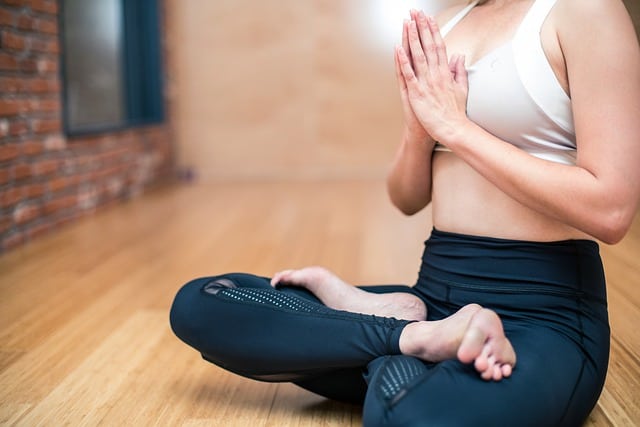How To Prevent Numbness During Meditation
Last Updated: September 19th, 2023
By: Mark Stevens
The simplest answer to prevent numbness during meditation is to simply choose a comfortable position before you begin your meditation. You do not need to cross your legs to meditate. You do not need to sit on your legs to meditate. You don’t really want tingling in legs during meditation.
There’s a common belief that how you sit is important for meditation – and that is true. But there is no rule that says you must sit the same way as someone else sits. The important thing is that you sit in a position which is stable for you, comfortable for you, and safe for you. Good posture is important, but good posture is as unique to each person as their own skeleton is.
Some people will be able to sit with their legs crossed for a prolonged period of time – long enough to have a good meditation. For these people, sitting with their legs crossed provides a good stable platform for them to have their meditation safely. Their back is straight and supported in this position.
But if you are trying this position and your legs are going numb then this position is not safe, stable or suitable for you and you will need to find another.
Contents

Is Meditation Bad for Knees?
That depends. If you’re meditating with your legs crossed, or you’re kneeling while meditating then it can be bad for your knees. If you’re feeling pain somewhere in the position you’re meditating then you can assume that it’s bad for whatever it is that’s hurting.
There’s no set position for meditating – although sitting is preferred to laying down (for reasons we’ll discuss in a later section), there’s no specific position you need to sit in.

It’s not compulsory to use this position to meditate!
Making yourself comfortable is important.
Image by Irina L from Pixabay
You Can Use a Meditation Cushion To Help Prevent Numbness
A meditation cushion or pillow can be one of the best ways to make sure your legs don’t fall asleep while meditating. Using a cushion for meditating can help you get into a comfortable position which you can remain in for the 15 minutes to half an hour that you will probably want to be meditating. It can help by altering your posture to be the most stable and comfortable depending on how you want to use it.
If you do want to sit crossed legged (or in the Easy Pose) a cushion can help as rotates your hips slightly since your legs are slightly lowered compared to the hips. This puts less pressure on the joints of the hips, knees and ankles and is a more natural position. Getting medical for a moment, sitting on a cushion can allow a larger angle at the knee which helps to allow the arteries maintain the correct diameter and therefore improves blood flow to the lower leg and foot. It is of course the blood flow being reduced that causes the numbness or pins and needles while meditating. In a similar fashion, the nerve is less likely to be compressed, which leads to the tingling feeling too.
Kneeling While Meditating
If you prefer to kneel while meditating, then a meditation cushion is probably going to be an almost essential piece of equipment for you. The act of kneeling is, for many people, extremely painful on the knees and as one gets older, this becomes worse. A cushion will reduce the impact of a hard surface pressing against the bones of your knees and reduce pain considerably.
There’s a reason many churches have small cushions for worshippers to kneel on during a service.
Kneeling can be a good position to choose when meditating so long as you make sure the position is stable. Kneeling will almost certainly ensure that you don’t fall asleep while you’re meditating, and will keep your focused on the meditation. But without a cushion it will quickly lead to pain and potential injury. For some people, they may need to focus too much on staying upright for this to be a useful way to meditate.
Meditating in a Chair Can Help
Whether you meditate in a more lounging position in a chair or sitting upright with your hands on your knees can, in many cases, be simply a matter of choice of chair itself. Be cautious of choosing a position that is too much like a lounging position as it can be difficult to stay awake while meditating and it can be difficult to maintain a healthy and safe posture.
A dining chair can therefore be a better meditation venue than a sofa or couch – but again you’ll need to be sure you’re not going to fall asleep during the meditation. A chair that offers little in the way of side support will potentially help you stay awake as you’ll be aware that falling asleep could literally mean falling in this instance.
Changing Posture Will Reduce Numbness When Meditating
There are many people who believe that one should be perfectly still while meditating. For beginners to meditation this is probably a valid point as the movement of your body could be a significant distraction. If you’re finding it hard to get into the mindspace suitable for a meditation then any distraction, even movement, is probably best avoided.
But as you become more accustomed to meditation you will find that you can tolerate movement, or other distractions much more easily and even things such as sneezing during a meditation will not pull you out of the meditative state (for very long at least).
Thus as you practice meditation more and more, you’ll find that you can adjust your position during the meditation with no ill effect and indeed, with the benefit of reducing the risk of numbness while meditating.
Can You Meditate Laying Down?
Once again this is a very personal choice. Personally, I do lay down when meditating, quite often. I find it the most relaxing position to be in and I can visualise my body relaxing much better when I am laying down. But it is not for everyone, because many people will fall asleep if they meditate laying down.
I sometimes fall asleep while meditating because I’m laying down. However, it doesn’t bother me because I’ll often get the message I am seeking anyway, either before I fall asleep, or during the sleep itself.
So it rather depends on how you want to proceed with your meditation. If falling asleep during your meditation will interfere with the process than laying down is probably best avoided. This personal choice can also vary depending on the day for each individual. Sometimes you’ll not be fussed whether you fall asleep or not, and other times you’ll be certain you want to stay awake.
Summary
The prevention of leg numbness while meditating is easy – just choose a position that doesn’t compress the nerves and blood vessels in your legs. This can be with a more open angle when you cross your legs, or you may not cross them at all.
Although many people will tell you that you must meditate in a certain position, I disagree. The process of meditation is a personal one and you will choose a position that best suits you. This position may change depending on your desired outcome for the meditation and it may also evolve over time.
Meditation is not an end-point, it is a journey and will always be so. You will adapt your meditation practice the more you do it and the more experienced you become. So don’t be afraid to experiment.
Find a position that is comfortable, safe and works for you and don’t worry about what anyone else thinks.
We hope you’ve found this post helpful and if you’ve enjoyed it please feel free to share it with your mystical or spiritual friends using the buttons below. If you have any comments, questions or other feedback please let us know using the comment form below.
Thanks for reading!

